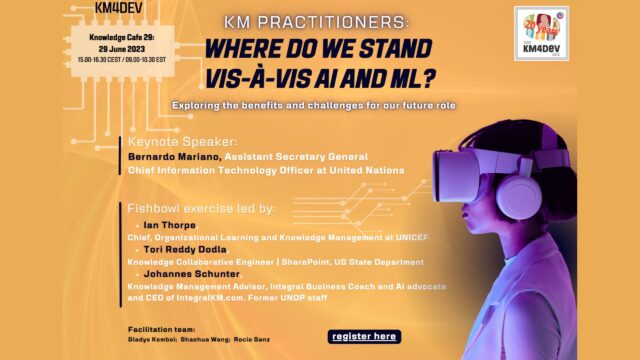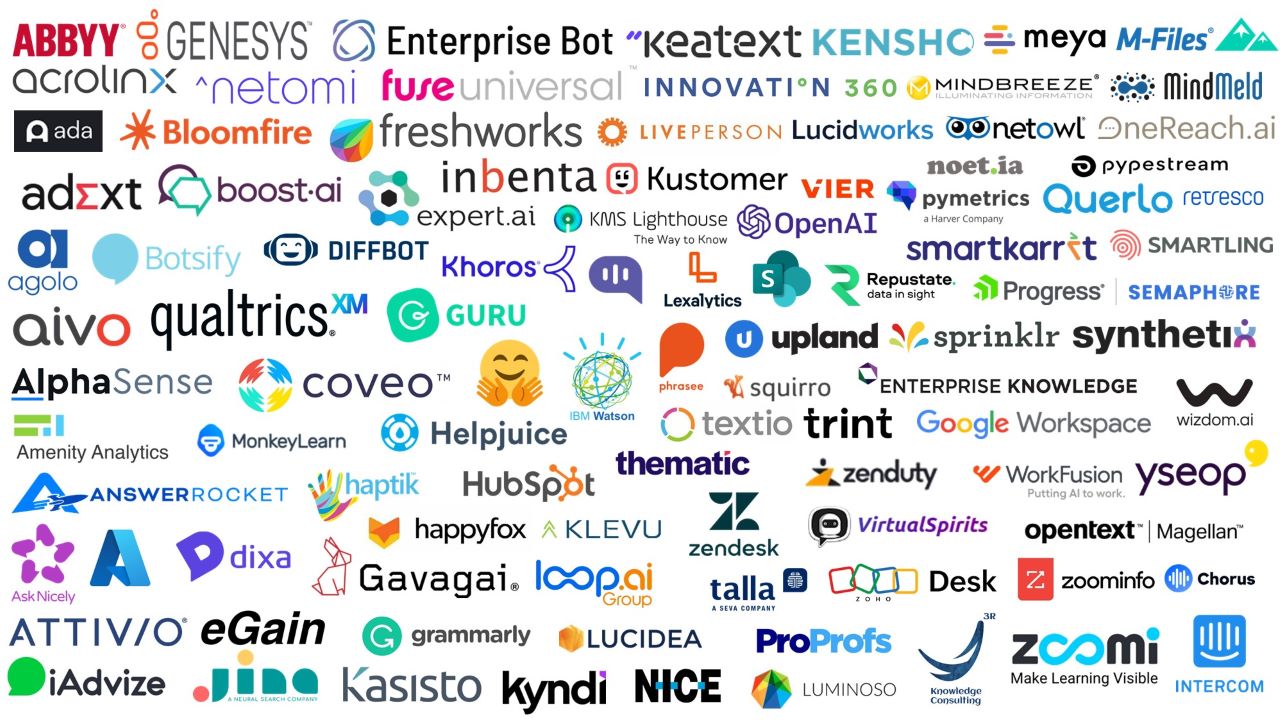
AI-based KM features for knowledge analytics and intelligence [Generative AI & KM series part 8]
This article is part 8 of the series AI integration strategy for learning and knowledge management solutions.
A comparative study of 100 generative AI tools in the context of learning and knowledge management (KM) was conducted and has resulted in a set of 35 KM processes where generative AI1 has augmented their experience, implementation, and execution. This article (part 8 in the series) focuses on knowledge analytics and intelligence.
Part 8. Knowledge analytics and intelligence
8.1. Metadata enrichment (classifier, dictionary…)
With the help of generative AI and natural language processing, content can be enriched with meta-data and semantic relationships. The enrichments include entity extraction, sentiment analysis, emotion analysis, keyword extractions, classifier, concept auto-tagging, regular expression, patterns, lexicon, dictionary and more.
- Classifier: define categories by which text in the documents can be classified.
- Dictionary: recognize terms and synonyms for terms that are significant to the user, such as the names of products that the company sells.
- Regular expression: define regular expressions that capture terms of significance, such as that AB10045 is the syntax that is used for the customer order numbers.
- Patterns: Recognize regular expression – terms, that are mentioned in sentences that match a syntactic pattern that you teach AI to recognize. For example, International Standards numbers, such as ISO 45001, ISO 22000.
- Lexicon: A database that describes a human language and the world where that language is spoken, using symbols and their semantic relationships. It is like a huge dictionary that contains hundreds of thousands of semantic relationships.
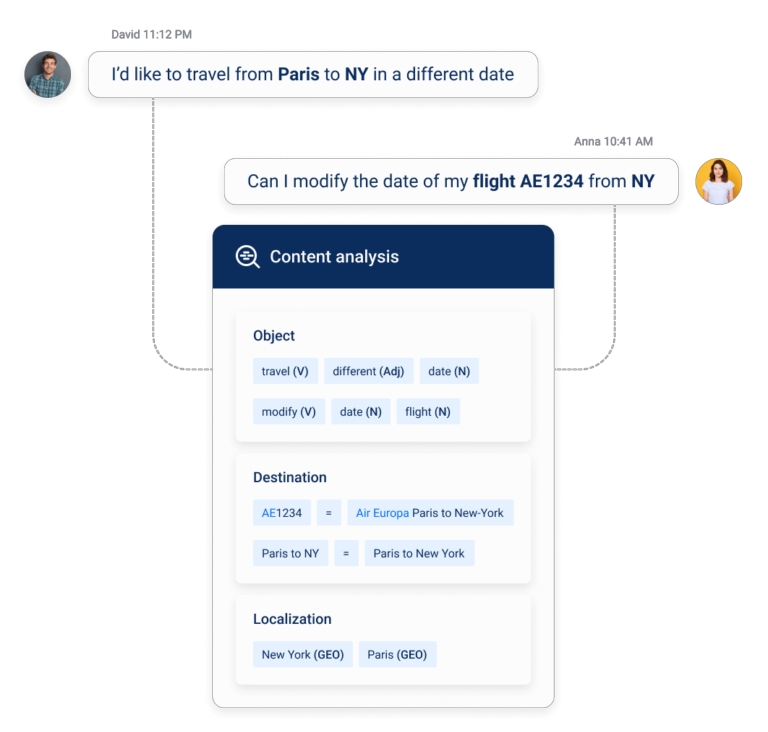
For example, a streaming service company was able to utilize AI algorithms to enrich the meta-data of movies from several sources and micro-tag movies based on what the reviewers found worth mentioning, their critics, rather than the content of the movie itself. Another example, the organizational learning leader relied on AI capabilities to automatically transcribe video to text, and automatically tagging of content which results in the creation of smarter more personalized feeds and accurate search results – whether that’s finding a course or video or extracting the answer from within the transcript of a video itself.
Intelligent document processing services are designed to analyze and classify documents and offer metadata suggestions based on file contents, existing metadata, and even user behavior. Such services make use of technologies such as text analytics and machine learning to define and maintain document metadata for the user. Intelligent document processing can be coupled with AI Linking which is the process of joining two datasets together using machine learning models when they do not share a common unique identifier. It’s the ability to map messy data in the form of company names, aliases, and domains to do the mapping at scale with confidence. Once mapped to these unique IDs, a database becomes much more powerful. It is linked and cleaned, making data enrichment and deduplication seamless.
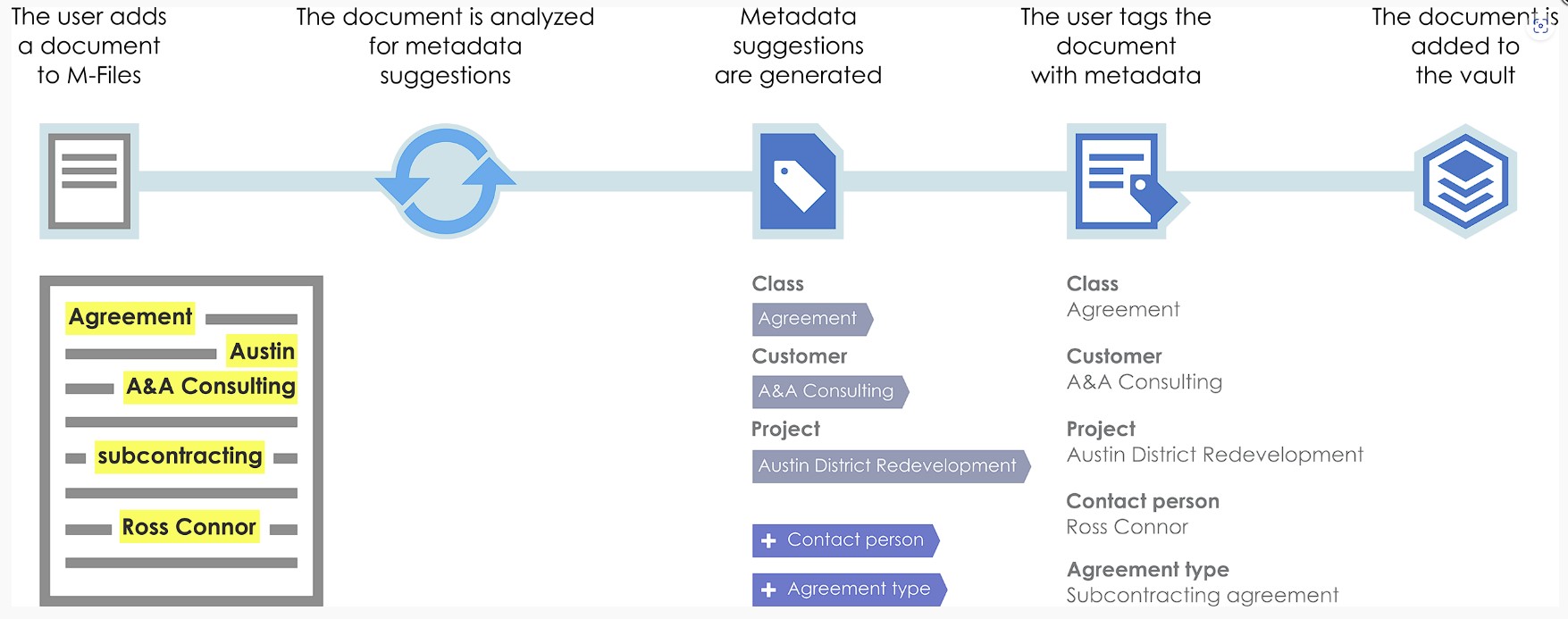
8.2. Generation of social/knowledge graph
A knowledge graph also known as semantic network visualizes the relationships among entities. Whereas a social graph visualizes the relationships among social actors – people. They can improve visibility and discoverability of knowledge in the flow of work. With the help of generative AI and relying heavily on natural language processing (NLP), it’s possible to convert text into structured facts about entities, their sentiment, and their relationships for a custom domain of interest. With the help of AI entity recognition services, entities in a text can be identified such as: the companies, people, organizations, events, places etc. – and then connects them to external data sources like Wikimedia and/ or encyclopedia, unlocking new understanding and insights.
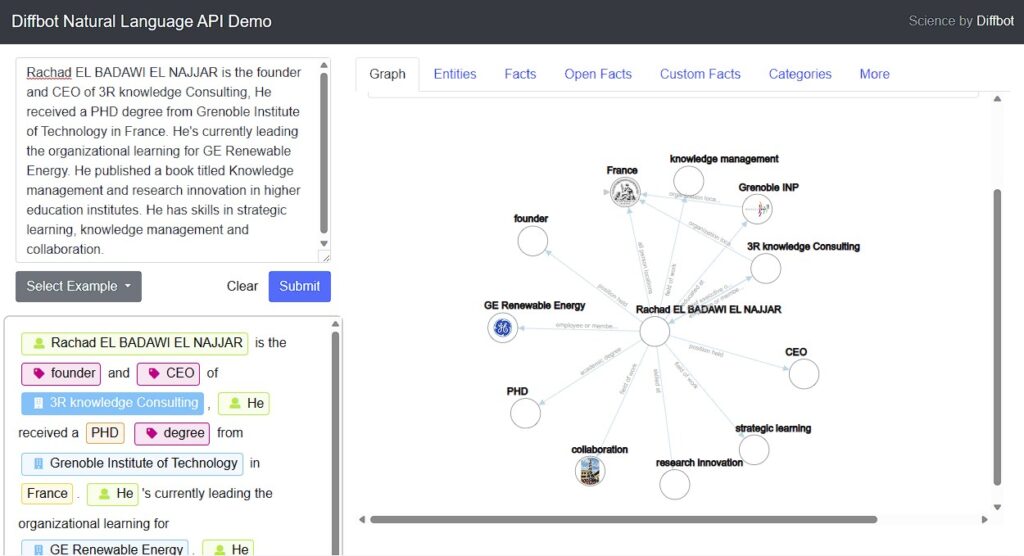
For example, drug discovery and drug repurposing processes can be automated using generative AI and NLP. The generation of knowledge graph specialized for life sciences and health care that enables accurate identification and connection of biomedical information such as diseases, drugs, treatments, symptoms, genes, proteins, and other data elements from context.
Business/technology analyst in collaboration with knowledge leaders can leverage knowledge graph technology to build connections between the organizational systems, it will instantiate a knowledge map driven by business taxonomy and ontology designs, adding consistent definition and context to the organization’s web of knowledge assets. The enterprise search engine can be empowered with a knowledge graph that can index, and structure search results.
8.3. Content analysis capabilities (predictive, NLP)
AI analysis capabilities can anonymously aggregate comments to identify trending topics in community discussions, sentiments and emotions and then flag critical issues. Community leaders can consider critical issues as knowledge gaps for further analysis and development. In collaboration with product/ service function, product managers can include the critical issues in their report, estimate an expected resolution timeline and potential cost savings. For example, an airline company has customer community forum where customers are reporting some issues while booking their flights. After going through all the forum posts, the AI assistant could identify the issue and would suggest fixing the ‘Air miles option to book flights with’. Product/service managers can further investigate the issue and take the required actions.
Generative AI can be applied to rapidly accelerate topic identification and reduce time to define focus areas for training and development. Gain deeper insights into what employees are looking for with experience analytics including search activity, clicks, content gaps, and custom events.
AI capability has been pre-trained to understand the common logic of things enabling business analysts to build the topic models in short time and further enabling them to turn texts into meaningful insights directly. “Learn-as-you-go” approach allows to understand context beneath the written words. Identify specific trend aspects that tie to a particular topic model or theme. For example, organizational transformation and change leaders can detect in real-time the unconscious social bias in written communications, so leaders can see exactly how the written language appeals to different employees’ groups, and how they perceive the communicated messages.
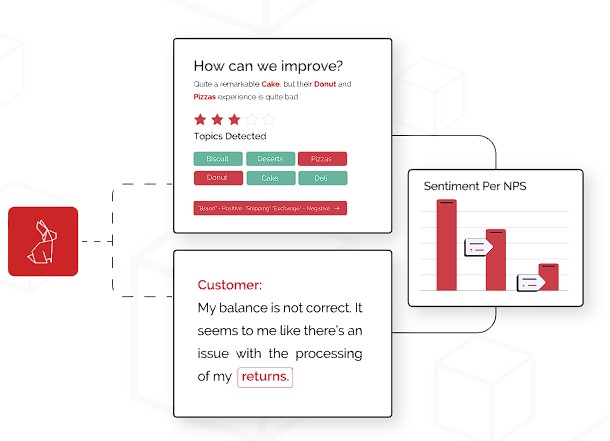
For data centers and network managers, AI based content analysis can identify redundant, outdated, and trivial (ROT) content to accelerate migrations, reduce storage costs and improve content retrieval.
For a customer service center, AI based content analysis can help in improving the customer satisfaction score (CSAT). It can understand the cause of customer frustrations and disappointments. A lengthy customer call may indicate that there’s a concern with the customer experience. AI can resonate with the customer context, sentiment and behavior and then works on identifying and prioritizing actions for customer remediation.
8.4. Content reporting & real-time data visualization
Content reports allow the content authors to set and follow up on content contribution goals and usage-based incentives for employees and subject matter experts. For a customer service center, content reporting enables the customer experience leaders to incrementally enhance the knowledge base based on customer support agents’ feedback. Reports created from wrap-up call data help to manage and plan the contact center agents’ training and staffing requirement. In sales and marketing function, content reporting features include drill-down and filtering that help marketers to find prospects information, competitors’ products, lead and closed deals, networks of brand ambassadors and key influencers.

AI algorithms can support real-time data visualization for decision makers, with executive summaries, threat levels, launch dates, pipeline and timeline information and bulls-eye charts. They also provide powerful insights into how different teams use content, what they’re searching for, and how it’s impacting performance. For example, AI based insights for knowledge base articles provide patterns on users contributing to the article category, search topics leading to the article, and negative searches leading to missing articles for development.
8.5. User, community & business analytics
With the help of generative AI and machine learning algorithms, analytics can become conversational, and users can ask about metrics in natural language, simply as if they are asking their colleagues about data and statistics. AI based analytics provides the capability to understand complex data schemas. For example, company specific dashboards can be developed in short time that maps the organizational structure. Offering various stakeholders both a helicopter view and the capability to drive down into the country, division, or team to see where engagement is high and where it isn’t.
AI based analytics can help in measuring qualitative characteristics and providing actionable insights, including conversation analytics, user behavior analysis, sentiment analysis, and performance metrics. In addition to the ability to understand content engagement, spot gaps, and identify the most important topics for content improvement.

The right set of metrics allows talent retention leaders as well as people’ managers to appreciate the people doing things right with recognition for achieving monthly customer experience goals. Some examples of user, community and business analytics are:
- What an individual user searches for, how many times has accessed a knowledge base, and which community is part of?
- Define a target for the number of resolved questions.
- Get on monthly basis the membership trends as well as the learners’ charts.
- Get the % of contributors within the community core members.
- How is the community sentiment evolving over time for a particular topic?
- Measure what topics are consumed by users?
- Most viewing time on articles.
- Solution quality index: % searches were successful (found answers).
Examples of AI-based KM tools for knowledge analytics and intelligence: Expert AI, Diffbot, Freshworks, Inbenta, M-Files, Gavagai, MonkeyLearn.
Next and final part (part 9): Summary and conclusion.
Header image source: Author provided.
Reference:
- Najjar, R. (2023, July 13). Preliminary Understanding of Generative AI: What & How? Medium. ↩


